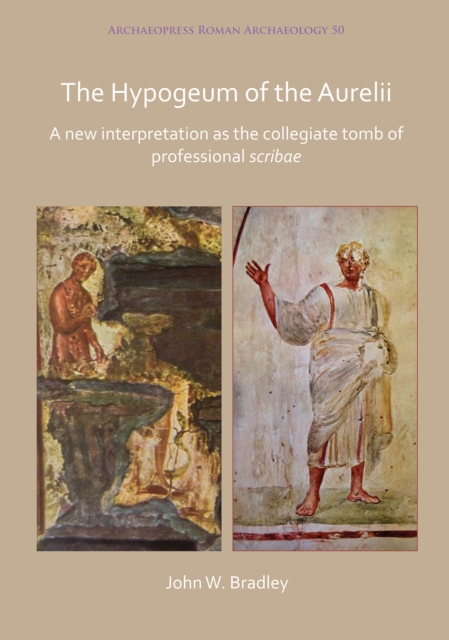
The Hypogeum of the Aurelii : A new interpretation as the collegiate tomb of professional scribae PDF
by John Bradley
Part of the Archaeopress Roman Archaeology series
Description
The Hypogeum of the Aurelii: A new interpretation as the collegiate tomb of professional scribae' examines the frescoes of one of the most enigmatic funerary monuments of ancient Rome.
The three chambers of the Hypogeum of the Aurelii, so-named from an mosaic inscription in one of the surviving chambers, contain a varied series of images that have long been considered an example of early Christian or Gnostic iconography.
One hundred years after the monument's discovery Dr Bradley challenges earlier theories and concludes that far from having religious significance the pictures reveal a world of professional pride among a group of what we might today call 'white collar workers'.
Although not among the rich and famous of Imperial Rome, the deceased nevertheless rose from a state of slavery to positions within the bureaucracy at the centre of an empire at its height.
Although part of a strictly hierarchical, and male-dominated, society the community to which the Aurelii belonged provided an environment of comparative equality: a community that acknowledged the contribution and expertise of both women and children in their profession.
The pride in their achievement is reflected in the decoration of the tomb in which they expected to spend eternity.
This study, the first in modern times to examine all the extant images in detail, will be of interest, not only to historians of ancient Roman art, but also to social historians who wish to more fully understand the lives of those who helped support the running of an empire.
Information
-
Download - Immediately Available
- Format:PDF
- Pages:212 pages
- Publisher:Archaeopress Publishing Ltd
- Publication Date:31/01/2019
- ISBN:9781789690484
Other Formats
- Paperback / softback from £38.00
Information
-
Download - Immediately Available
- Format:PDF
- Pages:212 pages
- Publisher:Archaeopress Publishing Ltd
- Publication Date:31/01/2019
- ISBN:9781789690484










